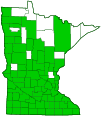desert false indigo
(Amorpha fruticosa)
Conservation • Wetland • Description • Habitat • Ecology • Use • Distribution • Taxonomy
Description |
||
Desert false indigo is a 3′ to 10′ tall, erect, bushy, perennial shrub that rises on 1 to several stems. It reproduces by suckers and sometimes forms dense thickets. It is often found leaning over water. The stems are erect or leaning, often branched, woody, and up to 2⅜″ in diameter at the base. The bark is gray and rough and has numerous short, horizontal lenticels. First-year twigs are grayish-brown and are covered with short, fine, white, appressed hairs. Second-year twigs are usually hairless. The leaves are alternate, deciduous, and 12″ to 40″ long. They are pinnately divided into usually 9 to 21, occasionally up to 35 or more, leaflets. They are on ⅝″ to 1⅜″ long leaf stalks. The leaf stalks are usually covered with short, white, appressed hairs, sometimes hairless. The leaflets are oblong to elliptical, 1″ to 1¾″ long, and ⅜″ to ¾″ wide. They are tapered at the base and rounded or blunt at the tip. The leaf tip is occasionally slightly notched and has a short, sharp, abrupt point. The upper surface is dark green, not shiny, and is hairless or sparsely covered with minute hairs. The lower surface is pale green and is usually sparsely covered with fine, short, hairs. The underside is also sometimes dotted with black, sunken glands. The margins are untoothed. The inflorescence is a cluster of 1 to 4, usually 3, erect, spike-like racemes at the end of the stem and branches. The racemes are densely flowered, 2″ to 6″ long, and ⅜″ to ¾″ wide. The individual flowers are on 1 ⁄32″ to 1 ⁄16″ long stalks. There are 5 green sepals fused for most of their length into a bell-shaped, ⅛″ long tube (calyx), then separated into 5 shallow, unequal, triangular lobes. The upper 4 lobes are short, the lowest lobe longer and narrower. The corolla is a single 3 ⁄16″ to ¼″ long, deep violet-purple petal. The petal is tubular near the base, unfolded near the tip to form a protective covering over the stamens and pistil. There are 10 stamens with purple filaments united near the base and yellow to orange anthers protruding well beyond the corolla. The fruit is a bright green, hairless, conspicuously glandular, oblong, ¼″ to ⅜″ long pod with 1 or 2 seeds. The pod matures mid August to late September. It turns brown when it dries. |
||
Height |
||
3′ to 10′ |
||
Flower Color |
||
Deep violet-purple |
||
Similar Species |
||
Habitat |
||
Lake shores, riverbanks, stream banks, meadows, shallow marshes. |
||
Ecology |
||
Flowering |
||
Late May to early July |
||
Pests and Diseases |
||
|
||
Use |
||
|
||
Distribution |
||||
|
Sources |
|||
| 4/9/2023 | ||||
Nativity |
||||
Native |
||||
Occurrence |
||||
Common |
||||
Taxonomy |
|||
| Kingdom | Plantae (Plants) | ||
| Division | Tracheophyta (Vascular Plants) | ||
| Subdivision | Spermatophytina (Seed Plants) | ||
| Class | Magnoliopsida (Dicots) | ||
Order |
Fabales (Legumes, Milkworts, and Allies) | ||
Family |
Fabaceae (Legumes) | ||
| Subfamily | Faboideae | ||
| Tribe | Amorpheae | ||
Genus |
Amorpha (false indigo) | ||
Subordinate Taxa |
|||
Synonyms |
|||
Amorpha angustifolia Amorpha bushii Amorpha croceolanata Amorpha curtissii Amorpha dewinkeleri Amorpha fruticosa var. angustifolia Amorpha fruticosa var. croceolanata Amorpha fruticosa var. emarginata Amorpha fruticosa var. oblongifolia Amorpha fruticosa var. occidentalis Amorpha fruticosa var. tennesseensis Amorpha occidentalis Amorpha occidentalis var. arizonica Amorpha occidentalis var. emarginata Amorpha tennesseensis Amorpha virgata |
|||
Common Names |
|||
desert false indigo desert indigobush dullleaf indigo false indigo false indigo-bush indigobush leadplant |
|||
Glossary
Calyx
The group of outer floral leaves (sepals) below the petals, occasionally forming a tube.
Corolla
A collective name for all of the petals of a flower.
Lenticel
A corky, round or stripe-like, usually raised, pore-like opening in bark that allows for gas exchange.
Pinnate
On a compound leaf, having the leaflets arranged on opposite sides of a common stalk. On a bryophyte, having branches evenly arranged on opposite sides of a stem.
Raceme
An unbranched, elongated inflorescence with stalked flowers. The flowers mature from the bottom up.
Sepal
An outer floral leaf, usually green but sometimes colored, at the base of a flower.
Sucker
A basal shoot rising from the roots or from a bud at the base of a shrub or tree.
Visitor Photos |
|||||
Share your photo of this plant. |
|||||
| This button not working for you? Simply email us at info@MinnesotaSeasons.com. Attach one or more photos and, if you like, a caption. |
|||||
Luciearl |
|||||
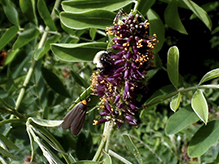 |
|||||
Laura Baxley |
|||||
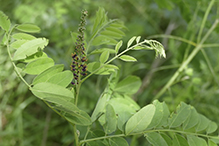 |
|||||
MinnesotaSeasons.com Photos |
|||||
Plant |
|||||
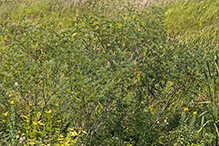 |
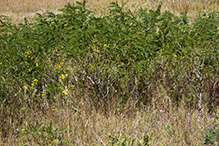 |
||||
Inflorescence |
|||||
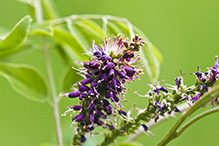 |
|||||
Leaves |
|||||
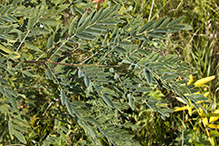 |
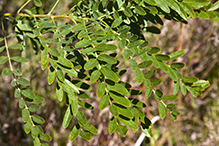 |
||||
Infructescence |
|||||
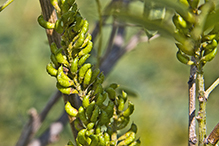 |
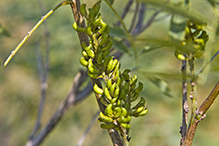 |
||||

Slideshows |
||

Visitor Videos |
|||
Share your video of this plant. |
|||
| This button not working for you? Simply email us at info@MinnesotaSeasons.com. Attach a video, a YouTube link, or a cloud storage link. |
|||
Other Videos |
|||
| Apis mellifera amorpha fruticosa 2as4nature |
|||
About
Published on Feb 20, 2014 Ape su amorfa, Remanzacco (UD) |
|||
| Čivitnjača (Amorpha fruticosa).avi jubpz |
|||
About
Published on Jan 9, 2013 Invazivna biljka čivitnjača ili amorfa brzo se širi poplavnim nizinskim terenima ubrzavajući proces sukcesije. Također predstavlja i velik problem kod podizanja mladih šuma hrasta lužnjaka jer raste brže od mladih hrastova. Hrastići ostaju bez svjetlosti u gustom sklopu ove biljke te se suše. Vrlo ju je teško iskorijeniti. |
|||
| Honeybees on False Indigo-bush セイヨウミツバチ♀と赤い花粉団子 sigma1920HD |
|||
About
Published on Aug 10, 2012 Workers of honeybee (Apis mellifera, family Apidae) foraging for nectar and pollen on the flowers of desert false indigo (aka false indigo-bush or bastard indigobush; Amorpha fruitcosa, family Fabaceae) at the riverbank. The pollen basket (or corbiluca) on the hindleg is loaded with red pollen. Mid-June 2012 in Japan. 日本語による詳細はブログをご覧ください。 http://sigma-nature-vlog.blogspot.jp/2012/08/blog-post_11.html イタチハギに訪花するセイヨウミツバチ♀と赤い花粉団子 |
|||

Visitor Sightings |
|||||
Report a sighting of this plant. |
|||||
| This button not working for you? Simply email us at info@MinnesotaSeasons.com. Be sure to include a location. |
|||||
| Luciearl 6/27/2019 |
Location: Lake Shore, MN |
 |
|||
| Laura Baxley 7/11/2018 |
Location: Hole-in-the-Mountain Prairie |
 |
|||
MinnesotaSeasons.com Sightings |
|||||

|
Created: Last Updated: © MinnesotaSeasons.com. All rights reserved. |
